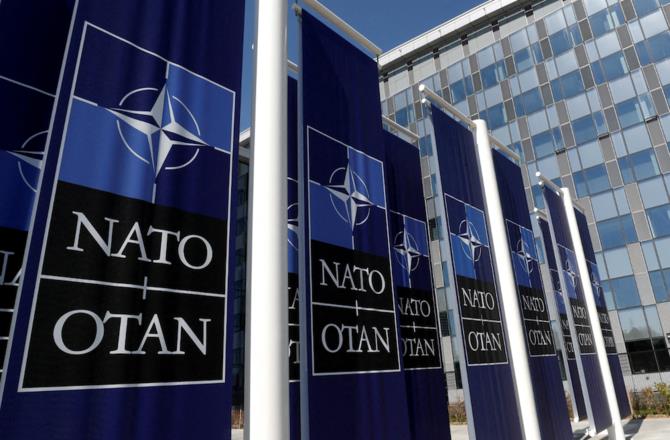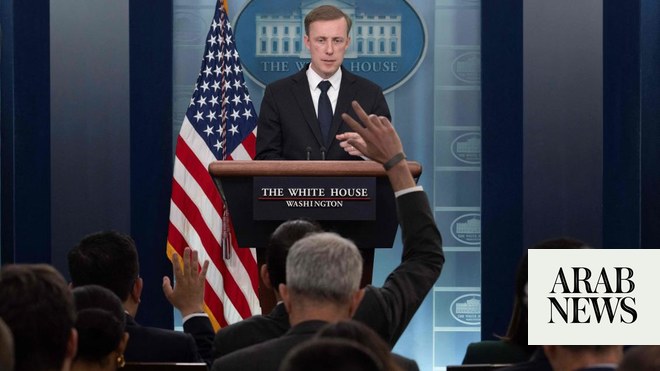
This week marks the 75th anniversary of the signing of the Washington Treaty. This landmark pact, originally with only 12 signatories, led to the establishment of the North Atlantic Treaty Organization. At the time of its founding in 1949, there was no certainty that NATO would have lasted this long, much less grow in size to 32 members. Today, NATO remains one of the most effective security alliances the world has ever seen.
It is not possible to understand the reasons behind the creation of NATO without also considering the geopolitical conditions that existed at the time. In the aftermath of the Second World War, an ideological struggle emerged across Europe, leading to a division between the Soviet Union and the other victorious allies that defeated Nazi Germany. In the words of Winston Churchill in 1946: “From Stettin in the Baltic, to Trieste in the Adriatic, an iron curtain has descended across the continent.” This was the beginning of the Cold War.
In 1948, the Soviet Union introduced a blockade against Berlin, forcing the US and UK to airlift food and supplies to the city. Later that same year there was also a Soviet-backed coup in Czechoslovakia. Other countries, from Norway to Turkiye, were threatened by Soviet expansion. Western European countries, along with the US and Canada, knew that something had to be done to ensure the continent’s security. This was when NATO was born.
After the Cold War ended in 1991, many in the US and Europe questioned the point of NATO without the Soviet threat. Throughout the 1990s, many member countries reduced the size of their armed forces and drastically cut their defense budgets. The cuts were part of a so-called “peace dividend” at the time that turned out to be a fantasy. The consequences of these deep defense cuts are still felt today, as many NATO members still do not spend enough on the armed forces.
Multiple crises in the Balkans in the 1990s led to NATO launching military operations there to stop genocides targeting Bosnians and Kosovars. After the Al-Qaeda terrorist attack on Sept. 11, 2001 against the US, NATO invoked Article 5 of the Washington Treaty for the first time in its history. Article 5 is the mutual defense clause which states that an attack on one member is an attack on all members. This meant that for the first time European aircraft were patrolling the skies over the US in the aftermath of the attack.
NATO’s leaders should look back to the early days of the alliance for inspiration.
Luke Coffey
Later, NATO would lead an international effort to bring stability to Afghanistan that ended disastrously in August 2021 after US President Joe Biden removed all troops from the country. The interventions in the Balkans and Afghanistan gave NATO a new focus, but not necessarily the new mission the alliance was looking for in the post-Cold War world.
It was not until Russia annexed Crimea in 2014 that NATO realized that its new mission is the same as its old mission: to defend the territory of its member states. Since Russia’s large-scale invasion of Ukraine in 2022, NATO has been almost solely consumed by bolstering its eastern flank, deterring further Russian attacks into eastern Europe, and helping Ukraine get the resources it needs to defend itself.
As NATO’s leaders meet in Washington this summer to formally recognize the 75th anniversary at a major summit, the security situation in Eastern Europe and Russia’s war against Ukraine will be top of the agenda.
At the summit, there will be a lot of backslapping and congratulations. After all, maintaining — and even expanding — a security alliance like NATO for three-quarters of a century is quite an accomplishment. However, the organization’s leaders must realize that there is plenty of work to do if the alliance is to remain relevant for the next 75 years.
First, as NATO’s leaders ponder the future, they should look back at the early days of the alliance for inspiration. For NATO to be as effective as it was during the Cold War, it needs to return to its original mission of collective defense. NATO does not have to be everywhere in the world doing everything, but it must be in the North Atlantic region able to defend its members.
Second, the alliance must also keep the door open to new members, as it did during the first few decades after its creation. NATO enlargement has been a force for good in Europe. It has spread stability and security to regions of the continent that otherwise would have been volatile. The prospect of joining NATO has enticed potential candidates to reform their militaries, economies and governments. In many cases, NATO membership was a precursor to attaining EU membership.
Finally, while NATO must remain focused on territorial defense in Europe, this does not mean it can ignore its neighbors. In addition to the 75th anniversary of the alliance, this year also marks the 30th anniversary of the Mediterranean Dialogue and the 20th anniversary of the Istanbul Cooperation Initiative. These are the platforms that allow NATO to engage with partners in North Africa and the Gulf, respectively. Close cooperation between NATO and partners in North Africa and the Middle East can help bring stability and security to all.
During the Cold War NATO’s mission was to stop the spread of communism into Western Europe; deter Soviet aggression; and, if required, defeat the Soviet Union on the battlefield. Thankfully, the alliance was able to fulfill its mission without a shot being fired.
Russia’s recent actions in Ukraine have been a wakeup call. The Cold War might be over. The Soviet Union is no more. But there is plenty to keep NATO busy. The decisions taken by the alliance now will determine how successful it is in the future.
Luke Coffey is a senior fellow at the Hudson Institute. X: @LukeDCoffey












